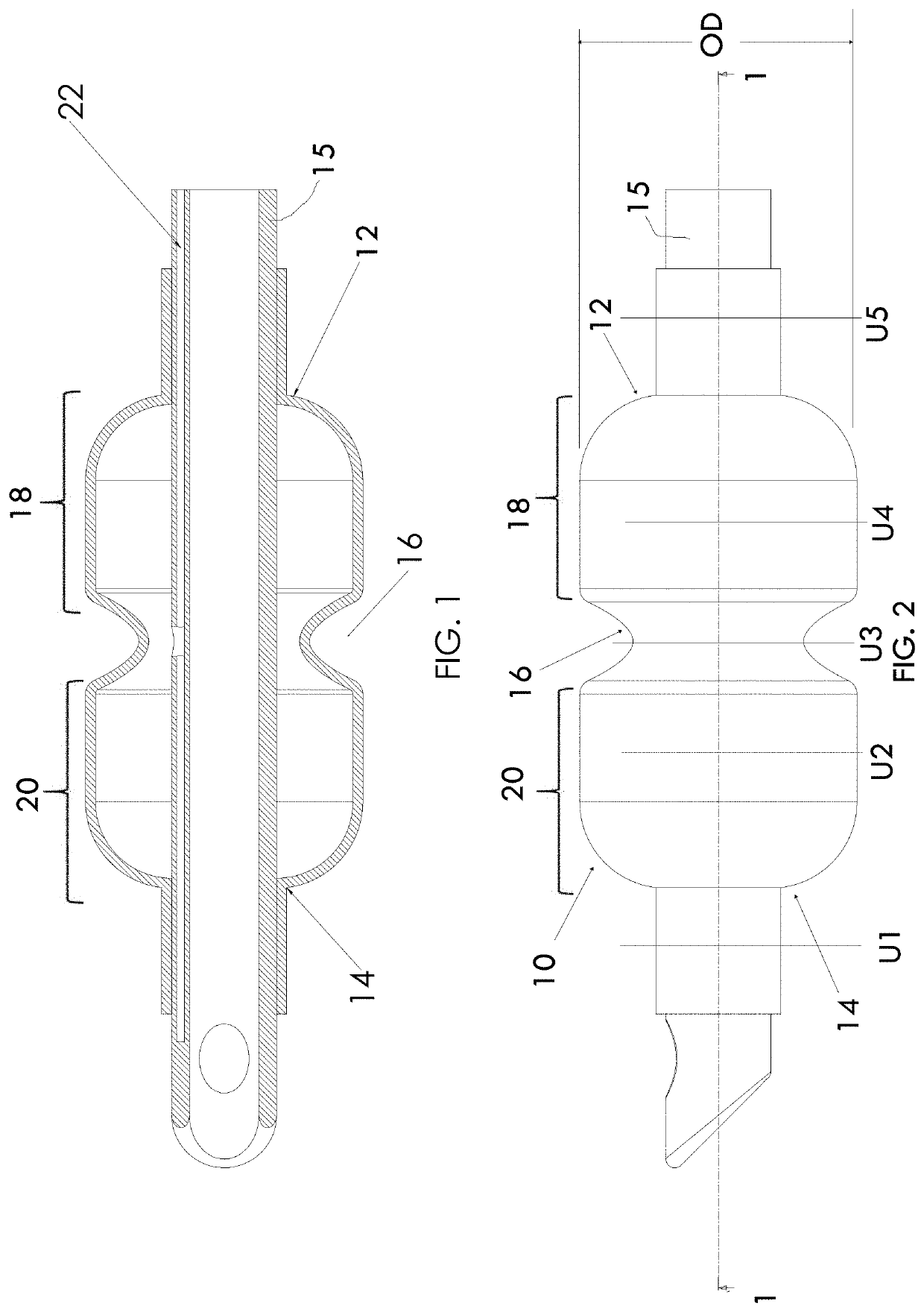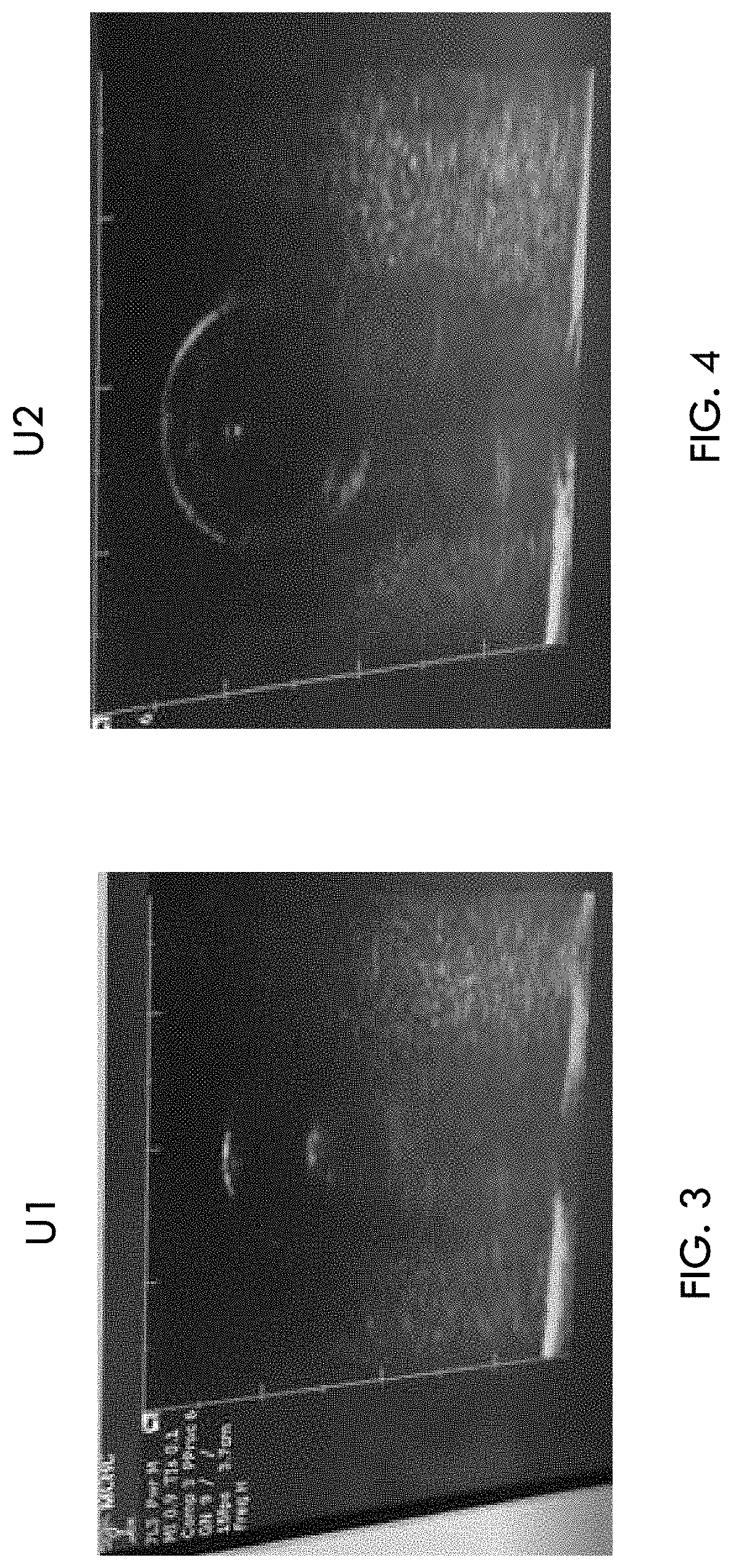Repositionable medical tube with ultrasonically-detectable cuff
a medical tube and ultrasonically-detectable technology, applied in the field of repositionable medical tubes, can solve the problems of increased risk of complications in critically ill pediatric patients, increased cost of chest x-rays for the primary purpose of checking the position of the ett, and increased risk of neurologic injury and death
- Summary
- Abstract
- Description
- Claims
- Application Information
AI Technical Summary
Benefits of technology
Problems solved by technology
Method used
Image
Examples
third embodiment
[0050]While the cuff has been illustrated as having a single divot, an alternate embodiment is for the cuff to be provided with multiple divots, such as illustrated in FIGS. 10 and 11. According to this third embodiment, the cuff 10 includes a proximate cuff region 18, a distal cuff region 20, a central cuff region 24, a first, proximal divot region 16A, disposed between the central cuff region 24 and the proximate cuff region 18, and a second, distal divot region 16B, disposed between the central cuff region 24 and the distal cuff region 20. The proximate cuff region 18, the distal cuff region 20, the central cuff region 24, the first, proximal divot region 16A, and the second, distal divot region 16B are in fluid communication with one another and share a common single inflation lumen 22.
fourth embodiment
[0051]A fourth embodiment is illustrated in FIGS. 12 and 13. According to this embodiment, the proximate cuff region 18 and the distal cuff region 20 are not in fluid communication with one another. Instead, the proximate cuff region 18 may be selectively inflated and deflated via a proximate cuff inflation lumen 22A with which the proximate cuff region 18 is in fluid communication, and the distal cuff region 20 may be selectively inflated and deflated via a distal cuff inflation lumen 22B with which the distal cuff region 20 is in fluid communication. The distal cuff inflation lumen 22B is fluidly isolated from the proximate cuff inflation lumen 22A. Both the proximate cuff inflation lumen 22A and the distal cuff inflation lumen 22B may be substantially coextensive with the primary lumen 15 of the medical tube, and preferably incorporated into the wall of the primary lumen 15. According to this embodiment, the divot region 16 is defined between the proximate cuff region 18 and the ...
fifth embodiment
[0052]the present disclosure is illustrated in FIGS. 14-16. According to this embodiment, a pair of axially extending divot regions 116 are provided, each of which is axially coextensive with first and second cuff regions 126, 128. A benefit of such one or more axially extending divot regions 116 is that the divot region 116 can be used in concert with an ultrasound probe to detect rotation of the medical tube, which can be useful in guiding or verifying proper advancement as between the trachea versus the esophagus. Rotation of an ultrasound probe through an angle of, for example, about 90° can permit depth readings with the ultrasound probe that would not be achievable using a medical tube lacking such axially-extending divot regions 116. While the first and second cuff regions 126, 128 could both be inflated with the same fluid, it may be desirable to fill the first cuff region 126 with a different fluid than the second cuff region 128, such as filling one of the cuff regions wit...
PUM
 Login to View More
Login to View More Abstract
Description
Claims
Application Information
 Login to View More
Login to View More - R&D
- Intellectual Property
- Life Sciences
- Materials
- Tech Scout
- Unparalleled Data Quality
- Higher Quality Content
- 60% Fewer Hallucinations
Browse by: Latest US Patents, China's latest patents, Technical Efficacy Thesaurus, Application Domain, Technology Topic, Popular Technical Reports.
© 2025 PatSnap. All rights reserved.Legal|Privacy policy|Modern Slavery Act Transparency Statement|Sitemap|About US| Contact US: help@patsnap.com



